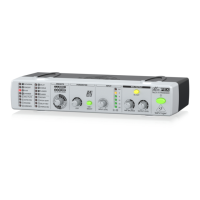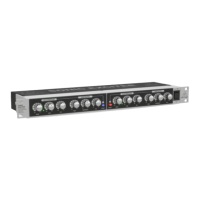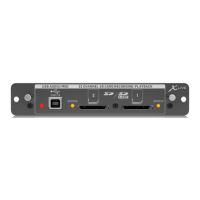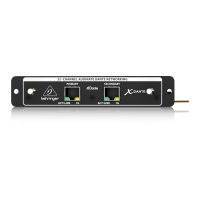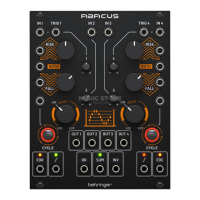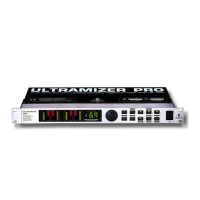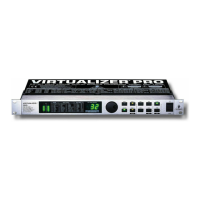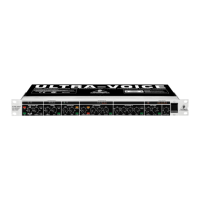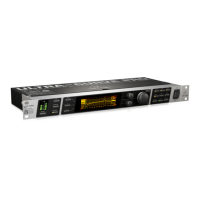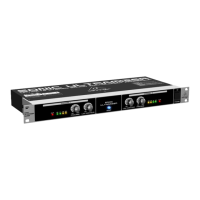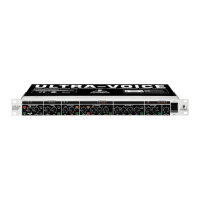13
MODULIZER PRO DSP1224P
Stereo Imager
This effect is used to process stereo mix signals, by splitting up the signal in middle and side informa-
tion (MS matrix). Both components can be raised separately in level and positioned on the stereo basis.
Additionally, the side signal can be shifted in phase to enhance the stereo effect even further.
The parameters:
VARIATION: Crossover Frequency: adjusts the phase shift onset.
EDITA: Gain: allows for adjusting level corrections (-6 ... +6dB).
EDITB: Spread: sets the intensity of phase shift and thus the stereo width.
EDITC: Mono Pan: positions the mono components on the stereo basis.
EDITD: Stereo Center: positions the stereo components on the stereo basis.
+ With the MIX function the ratio of center vs. side information is controlled
+ When applying increasing stereo width to heavily reverberated audio material, the reverb can
sound unnatural and too intense.
3D Space Maker
Similar to the Stereo Imager, this algorithm processes the stereo components. Through the use of
several psycho-acoustic phenomena, it also generates a kind of envelope around the room acoustics
information and thus allows for 3D sound with only 2 speakers.
The parameters:
VARIATION: In-Out: selects the type of 3D function (with/without emphasis on middle signals).
EDITA: Gain: allows for adjusting level corrections (-6 ... +6dB).
EDITB: Spread: controls the depth of the sound image.
EDITC: Crossover Frequency: adjusts the 3D effect onset.
In this algorithm the MIX function controls the ratio of middle vs. side signals.
Denoiser
As their name implies, denoisers are used to eliminate or at least reduce noise and other interference.
This algorithm also includes a noise-gate and an amplitude-controlled low-pass filter. Use this algorithm
of the MODULIZERPRO to eliminate unwanted noise tails.
The parameters:
VARIATION: Gate Threshold: determines the threshold below which the gate cuts off the signal.
EDITA: Gate Hold: determines the time after which the gate closes once the signal has fallen below
threshold (50-1,000 ms).
EDITB: Gate Release: the gates release time depends on the sound, e.g. percussive material re-
quires much quicker release times than, for example, keyboard pads with long decays (1-800 ms).
EDITC: Lo Pass Frequency: controls the cut-off frequency of the low-pass filter.
EDITD: Lo Pass Depth: adjusts the amount by which the signal level influences the low-pass filter.
1. INTRODUCTION
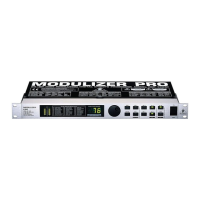
